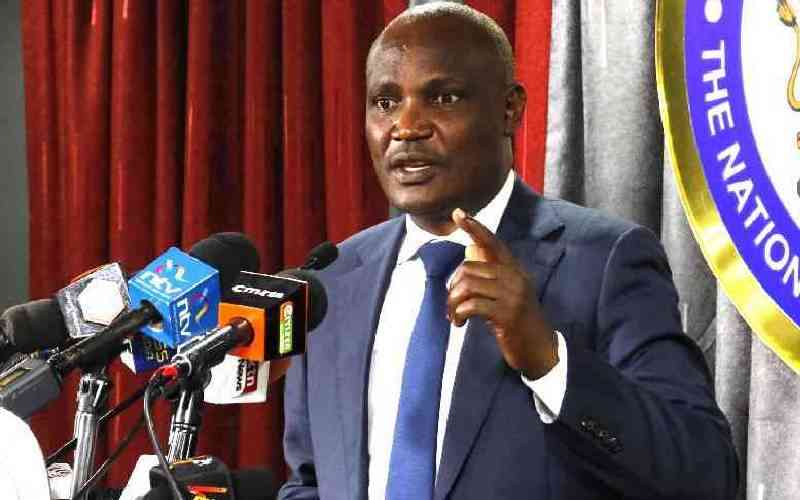There have been serious concerns raised about Government borrowing and spending recently. This is especially with regard to recurrent expenditure, such as salaries for bloated staff at the national and county levels, and the viability of megaprojects, such as the Standard Gauge Railway.
Other equally contentious projects include the Mombasa-Nairobi Expressway, which is estimated to cost Sh307 billion, and the JKIA-Westlands Expressway estimated at Sh60.2 billion.
In February 2018, the International Monetary Fund advised Kenya to formulate clear policies to address the “debt vulnerability”, which could rise further if the country continued with its borrowing trends.
Government spending
According to the Office of the Controller of Budget, corruption has been gobbling a staggering one-third of the country’s national budget. There is, thus, a real need for the Government to once and for all truly deal with corruption on the one hand, and cut down on non-essential and non-strategic recurrent expenditure – usually understood as austerity measures on the other.
Over the years, we have seen a number of measures employed to try to curtail Government spending. However, they always seem to be pronouncements geared towards placating the public rather than making true policy interventions meant to save taxpayer monies.
Despite statements indicating that the Government would cut spending on entertainment, transportation and overseas travel, we have continued to see such measures ignored by the very people who proposed them.
In April, the Kenya Institute for Public Policy Research and Analysis warned that the economy was already in the red and reeling under the pressure of a Sh5.3 trillion public debt, gradually reducing its ability to borrow more for development purposes.
Despite such warnings, the National Assembly recently gave a nod to the Executive’s plan to raise the debt ceiling, thus paving the way for further borrowing. It is rumoured that Kenya’s public debt could soon rise to 60 per cent of its gross domestic product, a figure that is untenable for our economy.
Last month, the Treasury slashed the Judiciary’s budget by 50 per cent, citing revenue shortages and a need to raise funds for the Big Four Agenda, which is in “full-steam ahead” mode, despite austerity measures.
This means that in the Executive’s wisdom, the smooth running of the Judiciary, which is a co-equal organ of State under the Constitution, is secondary or even tertiary to legacy projects that are dependent on Government borrowing.
These debt-dependent projects coupled with the wastage and theft involved are literally testing Kenya’s economy.
From a constitutional standpoint that emphasises the separation of powers between the Executive, the Judiciary and Parliament, I posit that this is a very dangerous development that seeks to, by effect, put the Judiciary below the Executive in the hierarchy.
It is supposed to ensure that the Chief Justice, judges and magistrates know where their bread is buttered and ensure that they toe the line, lest their budgets are slashed by the Executive and the National Assembly, which also seems captured by the Executive.
Essentially, this is supposed to return the status quo to the post-independence state of affairs where the Chief Justice and judges were beholden to the Executive.
Stay informed. Subscribe to our newsletter
Another affront to the Constitution and separation of powers has manifested in the refusal by the President to gazette the names of judges nominated by the JSC, citing reservations on their character. Courts have already interpreted that the President’s role is merely ceremonial.
The Judiciary is a co-equal organ of the Government of Kenya and not a department under the Executive.
The Judiciary has since announced that it will shut down several courts due to the budget cuts, affecting upwards of 1,500 cases, especially tribunals and mobile courts and benches of more than one judge.
It is noteworthy that under Article 48 of the Constitution, the State is required to ensure justice for all. This includes building of law courts, improvement of ICT connectivity and elimination of case backlogs, which are all important cogs for access to justice to be realised.
How does this auger with the fight against corruption that bludgeons a third of our annual budgets? Also, what informed the budget cuts to the Judiciary?
Under austerity
The Government, through the National Assembly and the Executive, should inform Kenyans whether or not Kenya is officially under austerity. If so, what steps has the Government, including ministries, departments, Senate, National Assembly and the Parliamentary Service Commission, taken to reduce non-essential expenditure?
We should also be privy to information on the rationale for increasing allocations to some organisations, while slashing others. Austerity cannot target the Judiciary, yet the Ministry of Interior, for example, raised its entertainment budget 35 times over between January and September.
It is worth noting that the Judiciary is one of the few Government institutions that has transformed and still gives hope to Kenyans. The fight against corruption cannot be won by increasing intelligence gathering, prosecution and investigations capacity while depriving the Judiciary, which determines criminal liability and renders punishment. All organs need to be sufficiently equipped to fulfill their mandate to the sovereign people of Kenya.
Mr Kiprono is a constitutional and human rights lawyer. [email protected] Twitter: @kipdemas
 The Standard Group Plc is a
multi-media organization with investments in media platforms spanning newspaper
print operations, television, radio broadcasting, digital and online services. The
Standard Group is recognized as a leading multi-media house in Kenya with a key
influence in matters of national and international interest.
The Standard Group Plc is a
multi-media organization with investments in media platforms spanning newspaper
print operations, television, radio broadcasting, digital and online services. The
Standard Group is recognized as a leading multi-media house in Kenya with a key
influence in matters of national and international interest.
 The Standard Group Plc is a
multi-media organization with investments in media platforms spanning newspaper
print operations, television, radio broadcasting, digital and online services. The
Standard Group is recognized as a leading multi-media house in Kenya with a key
influence in matters of national and international interest.
The Standard Group Plc is a
multi-media organization with investments in media platforms spanning newspaper
print operations, television, radio broadcasting, digital and online services. The
Standard Group is recognized as a leading multi-media house in Kenya with a key
influence in matters of national and international interest.









